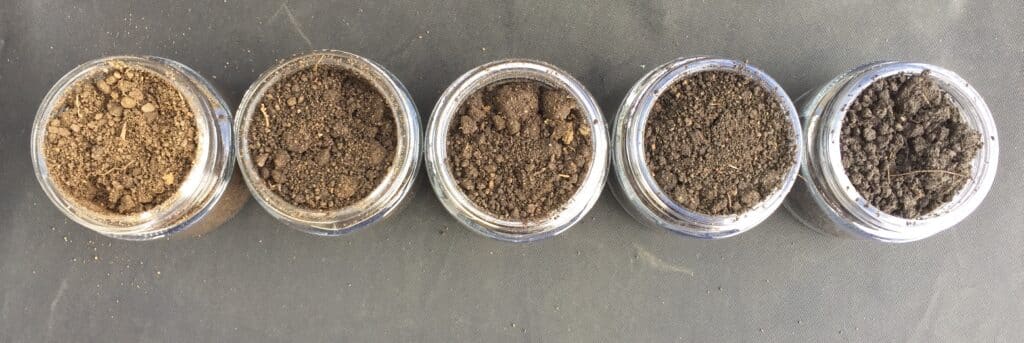Benefits of SWAT MAPS: Managing Lodging and Delayed Maturity
Picture this: you just got home from a family vacation at the lake in late July and you’re excited to go look at that wheat field that was looking pretty stellar before you left, especially since you know you had a good rain storm while you were away and it should have enough water to finish now. You get out there and…. what?! Most of the depressions and lower slopes are now lodged flat and can already see harvest will have some challenges.
If you farm in a black soil zone in western Canada this post should have some relevance you. Coming from a farm south of Theodore in east central SK, it definitely “hits home” for me. This black soil zone, as well as the black/grey soil transition area often have quite large variations in organic matter content across the landscape, such as the field in the example above from north central AB. One of the production challenges in this area is lodging and delayed maturity in toe-slopes and depressions where there is a lot of deep, rich topsoil and mineralization. So how can we help manage this with a SWAT MAP?

Crop lodging is often a function of nutrient imbalances, excessively low or high plant density, and/or poorly developed root systems in wet soils. Typically, good precipitation early in the growing season will lead to shallower roots but rank growth above ground. With good rainfall, mineralization will be high and depressions high in organic matter (OM) can mineralize A LOT of nitrogen. But shallow roots, along with soil deficiencies related to these soils, can quickly lead to nutrient imbalances – too much nitrogen relative to potassium, copper or others. Furthermore, if these areas remain wet for extended periods of time it results in root rot issues, compounding the problem even more. Peat depressions are notoriously responsive to potassium and copper. This is partly due to the lack of actual mineral soil particles supplying nutrients like potassium, but also copper tends to be held so tightly in high OM soils that it is unavailable to the crop, especially if pH is also high.
So what’s the benefit? In the above example, there is an opportunity to reduce nitrogen in the depressions, but also increase potash rate. We would have a close look at copper – in this case zones 5-8 have a higher likelihood of deficiency in cereals. We would also tend to increase seeding rate in the depressions (zones 7-10) to overcome higher mortality in these areas and achieve a proper plant stand. This reduces excessive tillering in cereals or branching in canola that delays maturity, provides better weed competition, and uses up more water that is often abundant in these zones.
The bottom line is this: the soil and resources available to a growing crop and yield limitations in zone 1 & 2 are completely different than zone 9 & 10 in this field, which is not an uncommon example for this moist black soil zone. These differences present an opportunity to use SWAT MAPS for better fertilizer ROI and improvements in harvestability and grain quality. No one likes harvesting lodged crops or waiting for those last few wheat tillers to mature so you can combine. Thankfully we now have the technology to help manage these issues.
In the next post I’ll dive even deeper into nitrogen management using new technology and water influences, so stay tuned!
Wes Anderson, PAg
Senior Fertility Specialist - Croptimistic Technology Inc.
wes@croprecords.com









